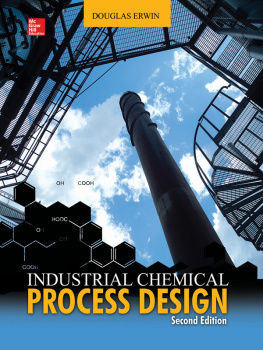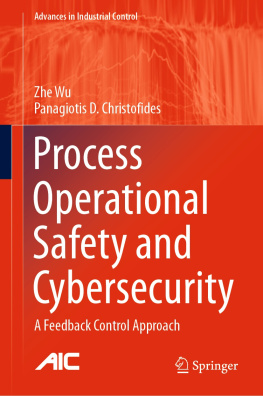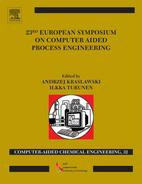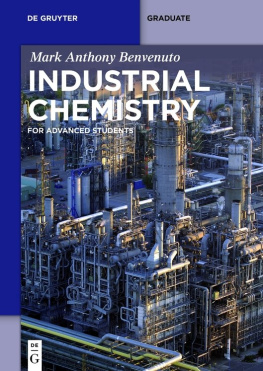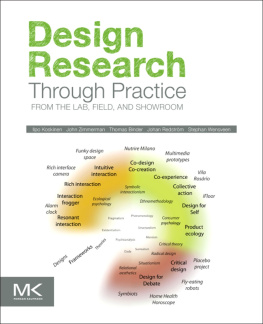Acknowledgments
The author wishes to acknowledge special appreciation to:
The American Petroleum Institute, API Technical Data Book, Third Edition (API, Washington, D.C., 1976)
The Microsoft Corporation, Visual Basic 3.0 and Excel
Professor Carl Yaws, PhD. Chemical Engineering Lamar University, Beaumont, Texas, a contributor of much value and appreciation
Professors R. L. Daugherty and A. C. Ingersoll, PhD, authors of Fluid Mechanics (McGraw-Hill, New York, 1954)
Professor Deane E. Ackers, Robert H. Perry, and staff specialist Don W. Green, editors of Perrys Chemical Engineering Handbook (McGraw-Hill, New York, 1997)
Professor Donald Q. Kern, author of Process Heat Transfer (McGraw-Hill, New York, 1950), source of the tables in of this handbook
In the authors worldwide travels as a practicing chemical engineer, countless other colleagues, friends, institutions, and companies have been most encouraging. A sincere and heartfelt thank-you to all.
Appendix A
LMTD Correction Factors
Ratings in the last two columns are based on a temperature of the heating medium of 240 to 400F. If the heating medium temperature is over 400F, and the cooling medium is known to scale, these ratings should be modified accordingly.
Precautions must be taken against deposition of wax.
Refers to a wet crudeany crude that has not been dehydrated.
Source : Standards of Tubular Exchanger Manufacturers Association, 2d ed., New York, 1949. Reprinted courtesy of McGraw-Hill from D. Q. Kern, Process Heat Transfer, McGraw-Hill, New York, 1950.
T ABLE A.1 Fouling Factors
a Dirt factor 0.001.
b Light organics are fluids with viscosities of less than 0.5 cP and include benzene, toluene, acetone, ethanol, methyl ethyl ketone, gasoline, light kerosene, and naphtha.
c Medium organics have viscosities of 0.5 to 1.0 cP and include kerosene, straw oil, hot gas oil, hot absorber oil, and some crudes.
d Heavy organics have viscosities above 1.0 cP and include cold gas oil, lube oils, fuel oils, reduced crude oils, tars, and asphalts.
e Pressure drop 20 to 30 psi.
f These rates are greatly influenced by the operating pressure.
Source : Reprinted courtesy of McGraw-Hill from D. Q. Kern, Process Heat Transfer, McGraw-Hill, New York, 1950.
T ABLE A.2 Approximate Overall Design Coefficients
Source : Reprinted courtesy of McGraw-Hill from D. Q. Kern, Process Heat Transfer, McGraw-Hill, New York, 1950.
T ABLE A.3 Heat Exchanger and Condenser Tube Data
Source : Reprinted courtesy of McGraw-Hill from D. Q. Kern, Process Heat Transfer, McGraw-Hill, New York, 1950.
T ABLE A.4 Tube-Sheet Layouts (Tube Counts)
F IGURE A.1 Tube-side heat-transfer curve. ( Adapted from Seider and Tate.Reprinted courtesy of McGraw-Hill from D. Q. Kern , Process Heat Transfer, McGraw-Hill, New York, 1950.)
F IGURE A.2 Shell-side heat-transfer curve for bundles with 25% cut segmental baffles. ( Reprinted courtesy of McGraw-Hill from D. Q. Kern, Process Heat Transfer, McGraw-Hill, New York, 1950.)
F IGURE A.3 LMTD correction factors for 12 exchangers. (Standards of Tubular Exchanger Manufacturers Association, 2d ed., New York, 1949.Reprinted courtesy of McGraw-Hill from D. Q. Kern , Process Heat Transfer, McGraw-Hill, New York, 1950.)
F IGURE A.4 LMTD correction factors for 24 exchangers. (Standards of Tubular Exchanger Manufacturers Association, 2d ed., New York, 1949.Reprinted courtesy of McGraw-Hill from D. Q. Kern , Process Heat Transfer, McGraw-Hill, New York, 1950.)
F IGURE A.5 LMTD correction factors for 36 exchangers. (Standards of Tubular Exchanger Manufacturers Association, 2d ed., New York, 1949.Reprinted courtesy of McGraw-Hill from D. Q. Kern , Process Heat Transfer, McGraw-Hill, New York, 1950.)
F IGURE A.6 LMTD correction factors for 48 exchangers. (Standards of Tubular Exchanger Manufacturers Association, 2d ed., New York, 1949.Reprinted courtesy of McGraw-Hill from D. Q. Kern , Process Heat Transfer, McGraw-Hill, New York, 1950.)
F IGURE A.7 LMTD correction factors for 510 exchangers. (Standards of Tubular Exchanger Manufacturers Association, 2d ed., New York, 1949.Reprinted courtesy of McGraw-Hill from D. Q. Kern , Process Heat Transfer, McGraw-Hill, New York, 1950.)
F IGURE A.8 LMTD correction factors for 612 exchangers. (Standards of Tubular Exchanger Manufacturers Association, 2d ed., New York, 1949.Reprinted courtesy of McGraw-Hill from D. Q. Kern , Process Heat Transfer, McGraw-Hill, New York, 1950.)
F IGURE A.9 Crossflow-temperature-difference correction factors: (a) both fluids unmixed; (b) one fluid mixed, other fluid unmixed; (c) both fluids mixed; and (d) two-pass counterflow, shell fluid mixed, tube fluid unmixed. ( Bowman, Mueller, and Nagle, Transactions of the ASME. Reprinted courtesy of McGraw-Hill from D. Q. Kern , Process Heat Transfer, McGraw-Hill, New York, 1950.)
F IGURE A.10 Tube-side water-heat-transfer curve. ( Adapted from Eagle and Ferguson, Proc. Roy. Soc. A127:540, 1930. Reprinted courtesy of McGraw-Hill from D. Q. Kern , Process Heat Transfer, McGraw-Hill, New York, 1950.)
F IGURE A.11 Tube-side friction factors. (Standards of Tubular Exchanger Manufacturers Association, 2d ed., New York, 1949.Reprinted courtesy of McGraw-Hill from D. Q. Kern , Process Heat Transfer, McGraw-Hill, New York, 1950.)
F IGURE A.12 Tube-side return pressure loss. ( Reprinted courtesy of McGraw-Hill from D. Q. Kern, Process Heat Transfer, McGraw-Hill, New York, 1950.)
Appendix B
Software Program Exhibits
F IGURE B.1 Gas Compressibility Z dialog box (see ). Insert your input in the squares on the left. Use the mouse to locate the input square. Left-click Run and your answers appear in the squares on the right.
Please note that you may obtain the same values simply by clicking on Run before you make any inputs. These are the defaulted values made in the program code. To bring up any program, simply double-click on the Z.exe file on the website accompanying this book. Please note that you may load this file to any file location desired. Please be advised that you must also load Vbrun300.dll to the same file location for any Visual Basic . exe program to run .
F IGURE B.2 RK Equation of State dialog box (see and all other.exe programs provided with this book.
F IGURE B.3 a Crude oil characterization (see ).
1. Install the number of ASTM curve points you have.
2. Install the 50% number point of your data, or a best estimate.
3. Next install the point number, the ASTM F value, the corresponding API gravity value, and the pressure value of the ASTM distillation as shown on each of the lines in the large center input square. Please note that each value is separated by a comma.
4. Click on Input Data, then click on Save Data, and last click on Show Run Form.
F IGURE B.3 b Crude oil characterization (see ).
5. Click on Run Program, and the data calculations are displayed as shown.
6. You may use the defaulted values simply by first clicking on Input Data before doing anything else on the ASTMfrm1 ( .

